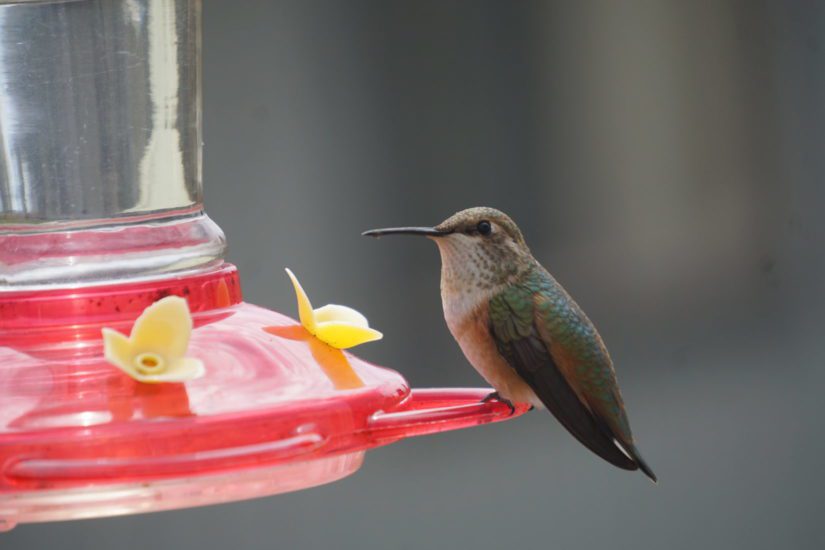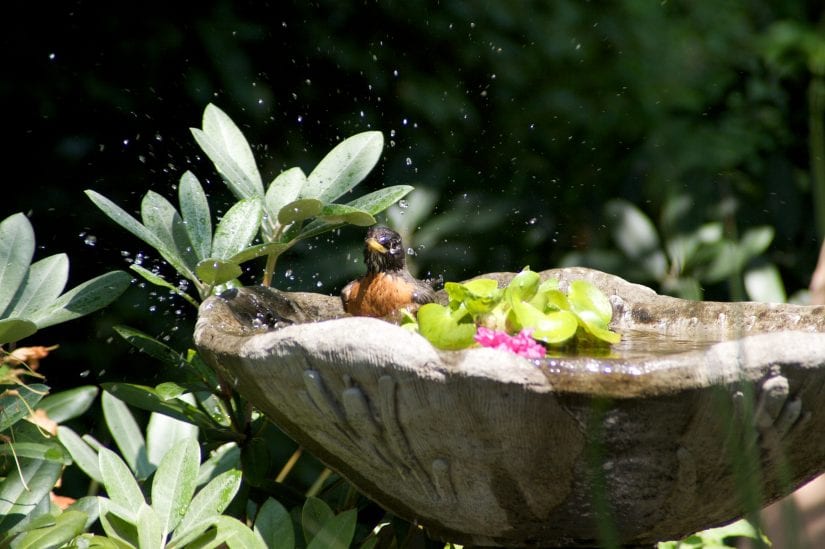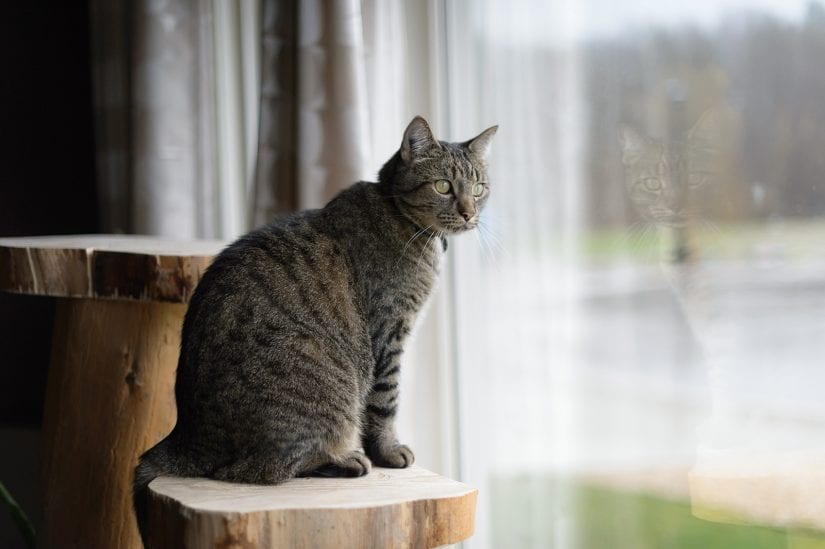Many of us enjoy gazing out our windows and admiring nature, especially if we’ve taken extra steps to attract wildlife to our green spaces. But did you know there could be hidden dangers in your garden oasis which put birds at risk? Protect your feathered visitors by taking a look at our quick safety checklist.
If you feed birds
How clean are your feeders?
Dirty feeders can spread disease – from conjunctivitis and salmonella, to potentially spreading avian influenza. Remove bird feeders during times of disease outbreak.
Discard any old seeds before cleaning. First wash the feeder with soap and water, using a bottle brush for small spaces. Wash the feeder again in a solution of 10% bleach for three minutes. Thoroughly rinse and allow it to dry completely before re-hanging. Repeat this every two weeks, or more often, as needed. If you can’t commit to a clean feeder, help birds safely with native bird-friendly plants.
Avoid wooden feeders because they can’t be disinfected properly.
Resist the urge to pack feeders full of food. It’s better to keep them less full and let the food move through the feeder more quickly.
Remember that sugar solutions for hummingbirds spoil more quickly in hot weather. Birdseed can also go mouldy, especially if moisture gets in the feeder.
Rake the area underneath the feeder regularly to remove droppings and seed hulls.

Where are your feeders?
Poorly placed feeders can make birds more vulnerable to window collisions and cat attacks.
Place feeders either less than 1 m from a window. Feeders closer to windows actually lead to fewer fatal collisions. Birds taking flight next to a window can’t build up enough momentum to strike the glass very hard.
Nearby trees and bushes allow birds to rest between meals, but they can also hide a stalking cat. The Cornell Lab of Ornithology suggests a distance of about 3 m between feeders and natural cover as a good compromise.
Spread feeders out to discourage birds from crowding at a single feeding station.

Don’t forget your bird baths!
Unattended baths are breeding grounds for disease.
Change the water every few days to get rid of debris — more often when lots of birds are visiting it. Using only a brush and running water, scrub the bath a few times a month to remove algae and bacteria.

If you have cats
Keep your cat indoors
Sadly, in Canada, hundreds of millions of birds are killed by cats each year.
From food puzzles to window shelves, there are plenty of things you can do to entertain your cat indoors, and give her opportunities to express her natural hunting instincts in the safety of your home.
Cats who are used to going outside can be transitioned into indoor kitties.

Supervise your cat outdoors
With lots to see and smell, the outdoors can be a very stimulating place for cats — but also very dangerous. Outdoor cats are at risk of being attacked by other cats and coyotes, or hit by cars.
Instead, take your cat outside for a leash walk, or let her roam your yard under your watchful eye. You can also build her a catio, which allows cats to experience the outdoors inside a screened enclosure.

If you come across an injured bird
Call a professional!
Don’t attempt to give food or water, or otherwise care for the bird yourself. Sick and injured birds require specialized care, and have the best chance of recovery in the hands of trained wildlife experts. Contact the BC SPCA wildlife support line at 1-855-622-7722 for help.

WildSense newsletter
Want to receive more stories like this, right in your inbox? Subscribe to WildSense, our bi-monthly wildlife newsletter.
The BC SPCA uses your personal information to update you on our work for animals as well as for advertising and analytics purposes. More information on uses and how to opt-out can be found in our Privacy Policy.
